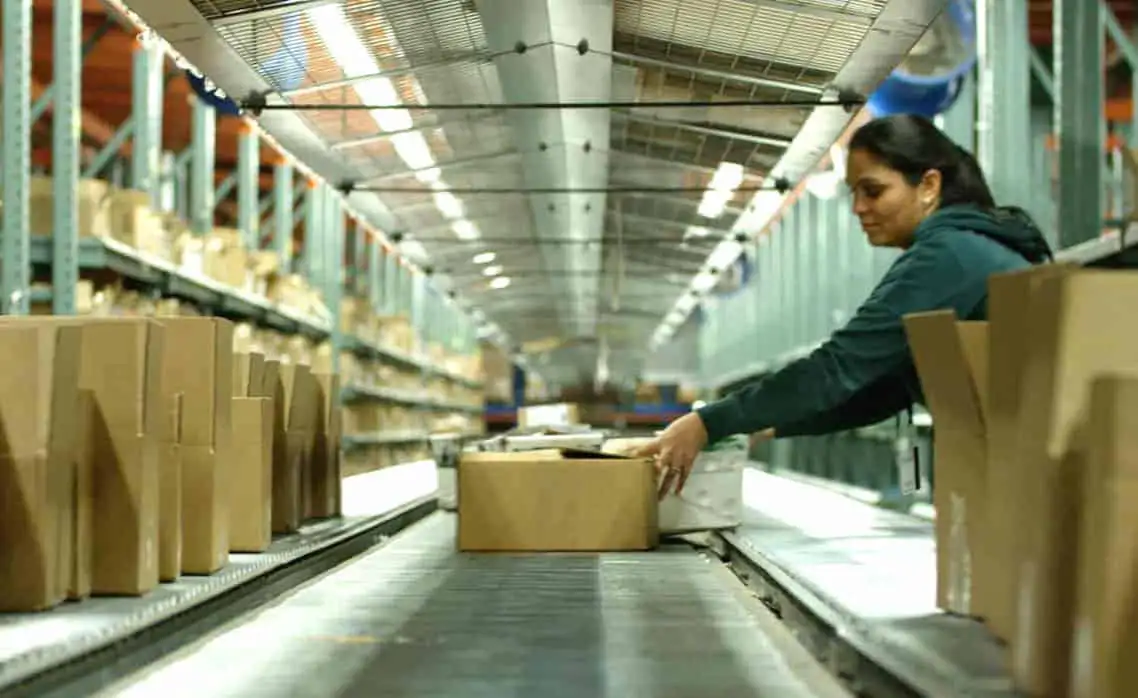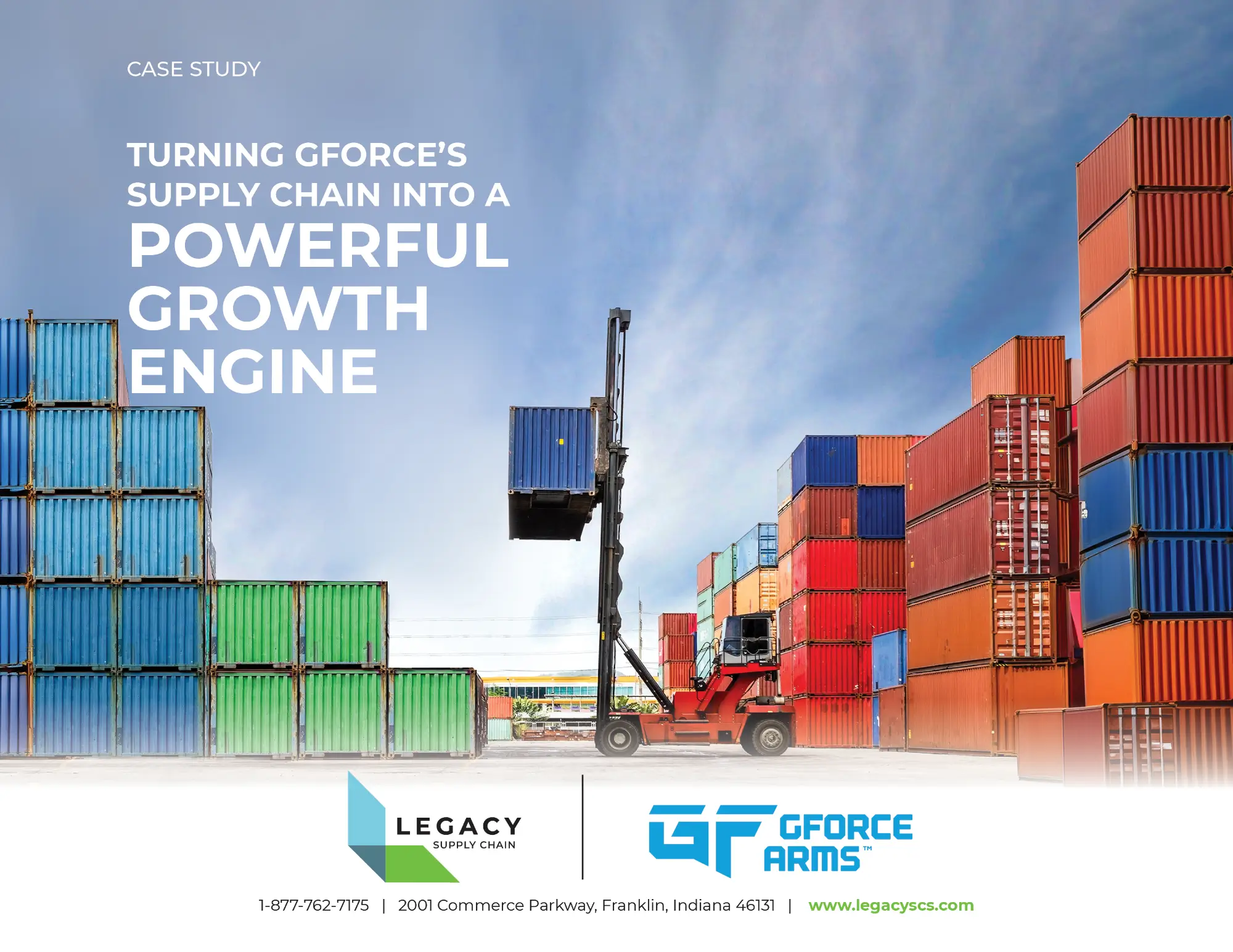Fulfillment Centers vs. Warehouses: What’s the Difference?
Although people unfamiliar with the finer points of the logistics industry often use the terms “fulfillment center” and “warehouse” interchangeably, they’re far from being one in the same. Though they are related, in that they both play an important role in the larger supply chain and may have some overlap in terms of the services they provide, warehouses and fulfillment centers each serve distinct functions.
We’re here to clear up any confusion between the two and to help you understand why it’s vital that B2B and B2C businesses have fulfillment centers dedicated to managing order fulfillment.
- What Is a Warehouse?
- What Is a Fulfillment Center?
- What’s the Difference Between a Warehouse and a Fulfillment Center?
- Warehouses vs. Fulfillment Centers: Which One Do You Need?
- Warehousing & Fulfillment: Why Legacy Is the Total Package
What Is a Warehouse?
Warehouses are large buildings that serve as secure, long-term storage facilities for both raw materials and finished goods. These buildings typically span thousands of square feet, are often simple in design and provide a controlled environment for inventory organization and management. Warehouses play a pivotal role in supply chain management, enabling businesses to optimize inventory levels and enhance overall operational efficiency by serving as a centralized location for receiving, sorting, storing and dispatching goods.
Warehouses are a cost-effective storage solution for businesses with lower sales volumes, providing long-term storage and optimized inventory management. Many warehouses offer flexible storage options, such as bulk storage or pallet storage, and have the ability to break down larger quantities of products into smaller quantities for easy distribution.
Common Types of Warehouses
There are many different types of warehouses, each designed to suit a particular need. These include:
- Private warehouses: A storage facility owned and operated by a specific company for their exclusive use or by a third-party logistics (3PL) company on behalf of a client; also known as a dedicated warehouse
- Public warehouse: A storage facility shared by multiple companies and typically owned and operated by a 3PL company that works with multiple clients; also known as a multi-client warehouse
- Automated warehouse: A facility in which various aspects of storage, retrieval and the movement of goods are mechanized and managed by automated systems, reducing or eliminating the need for manual intervention
- Climate-controlled warehouse: A facility equipped with specialized temperature and humidity control systems to preserve the quality and integrity of sensitive or perishable goods
- On-demand warehouse: A facility that provides storage space to businesses on an as-needs basis, offering temporary or short-term warehousing space so that businesses can adapt to fluctuations in inventory and demand
- Distribution center: A specialized form of warehouse designed to receive, store, process and distribute products to retailers, wholesalers or directly to consumers
What Is a Distribution Center?
Compared to traditional warehouses, which primarily serve the purpose of providing long-term storage, distribution centers serve as a waypoint in the movement of goods to either fulfillment centers or customers. As a result, distribution centers optimize for rapid inventory turnover and proximity to transportation routes and utilize more advanced technology, including automation, to streamline the distribution process.
Typical Warehousing Services
Warehouses provide a variety of services, such as short- or long-term storage, inventory management and value-added services. Examples of value-added warehousing services include:
- Labeling and barcoding
- Containment
- Quality control and inspection
- Repackaging
- Specialized handling
- Serialization
What Is a Fulfillment Center?
A fulfillment center is a facility that specializes in fulfilling customer orders, particularly for online stores or eCommerce companies. As such, they handle every aspect of order fulfillment, including receiving goods from suppliers or from a warehouse, picking and packing orders and shipping goods to their final destination, whether that’s a retail location or an end consumer’s front doorstep.
In addition to providing full-service operations, including rapid order processing and expedited shipping times, many fulfillment centers have eCommerce expertise to help their clientele navigate complex online order processing and deliver the scalability to accommodate seasonal demand.
Common Types of Fulfillment Centers
Much like warehouses, there’s a different type of fulfillment center to suit almost every need, including:
- ECommerce fulfillment center: A facility that specializes in providing fulfillment services to one or more eCommerce companies
- Retail fulfillment center: A facility that manages the storage, processing and distribution of products to meet the demands of one or more brick-and-mortar retail stores
- Direct-to-consumer (DTC) fulfillment center: A facility that picks, packs and ships orders directly to end consumers; may have some overlap with eCommerce fulfillment centers, or may be solely dedicated to fulfilling subscription box orders
- B2B fulfillment center: A facility that specializes in fulfilling orders for B2B transactions, such as wholesale or bulk orders
- Climate-controlled fulfillment center: A facility that features specialized temperature and humidity control systems to preserve the quality and integrity of sensitive or perishable goods during the pick, pack and ship process
- Reverse logistics center: A facility that focuses solely on managing return orders from customers
- International fulfillment center: A facility that specializes in fulfilling international orders
- Automated fulfillment center: A facility equipped with automated systems to reduce the need for manual order processing and streamline fulfillment
- Micro-fulfillment center: A small, highly automated facility designed to offer efficient order processing and fast delivery for online orders; often located close to urban areas to optimize last-mile logistics
It’s worth noting that some fulfillment centers serve multiple functions — for example, a facility might fulfill both eCommerce and traditional retail orders. These types of facilities are generally known as hybrid fulfillment centers, or multi-channel fulfillment centers.
Typical Fulfillment Center Services
Fulfillment centers offer a long list of services, including receiving and inventory management, short-term storage, order fulfillment, drop shipping and last-mile delivery. In addition to traditional fulfillment services, many fulfillment centers also provide value-added services, such as:
- Cross-docking
- Kitting and assembly
- Specialized handling
- Labeling and barcoding
- Subscription box
- Custom packaging
- Promotional inserts
- Repackaging
- Returns management
- Transportation optimization
What’s the Difference Between a Warehouse and a Fulfillment Center?
The key distinction between warehouses and fulfillment centers is that fulfillment centers typically offer a wider range of services. While warehouses provide long-term storage and, in some cases, value-added services, fulfillment centers cover every aspect of the order fulfillment process, including receiving and storing inventory, picking and packing orders and handling last-mile delivery.
Depending on the facility, some fulfillment centers even go a step further by managing reverse logistics, which involves bringing individual products or entire orders that end consumers choose to return back into the facility to either be repackaged or destroyed.
Other difference between these facilities include:
| Warehouse | Fulfillment Center | |
| Primary Function | Long-term storage | Order fulfillment |
| Primary Goal | Providing secure storage for raw materials and finished products | Processing orders as quickly and efficiently as possible |
| Clientele | Primarily B2B businesses | B2B or B2C businesses |
| Location | Strategically located to optimize space and cost, often in more rural areas | Strategically located to expedite last-mile delivery, often in or near major population centers |
| Value-added Services |
|
|
| Inventory Turnover | Low turnover | High turnover |
| Pickup Frequency | Infrequent pickups, usually weekly or monthly | Frequent pickups, sometimes multiple per day |
| Carrier Relationships | No carrier relationships | Extensive carrier relationships |
| Customer Focus | Minimal customer involvement, so little focus on customer experience | Major focus on customer experience and satisfaction |
Warehouses vs. Fulfillment Centers: Which One Do You Need?
Because fulfillment centers and warehouses serve distinct purposes, it isn’t so much a question of whether you need one or the other, but rather why your business needs both. Warehouses are often the first stop in an item’s logistics journey; finished products are sent from a manufacturing facility to a warehouse for storage until future notice.
When a company needs to replenish its available inventory, it will transport goods from its warehouse to a fulfillment center for processing and shipment, whether that’s to a brick-and-mortar retail location or on to the end consumer. In some cases, warehouses even serve as overflow facilities for fulfillment centers to avoid stockout.
By using both a warehouse and a fulfillment center, businesses can balance their long-term storage needs against their rapid order fulfillment requirements, effectively manage inventory levels, satisfy customers and optimize logistics operations.
Warehousing & Fulfillment: Why Legacy Is the Total Package
Legacy Supply Chain is a full-service, third-party logistics company that provides our clients with the expertise, technology and world-class customer service to confidently navigate supply chain complexity with ease. Whether you’re looking for dedicated contract warehousing, omni-channel distribution, eCommerce fulfillment or any other logistics services, we deliver over 40 years of on-the-job experience to help you optimize operations and build dependable connections with your customers.
Rapidly Improve the Performance of Your Warehouse
See sustainable results in just six to 12 months with the expert insights found in our free whitepaper.
-
Legacy Achieves Platinum Status for Delivery Excellence From Amazon
When it comes to supply chain performance, the margin for error is razor thin. Customers expect orders to arrive quickly, accurately, and...
+ Read more -
IPS Corporation selects Legacy as 3PL Partner to drive Supply Chain Transformation
FRANKLIN, IN | September 10th, 2025 – Legacy SCS announced that it has been selected by IPS Corporation, a global leader in Water...
+ Read more -
How GForce Transformed Its Supply Chain Into a Powerful Growth Engine
When GForce Arms launched in 2020, the mission was simple but ambitious: deliver affordable, reliable firearms with the speed and...
+ Read more




